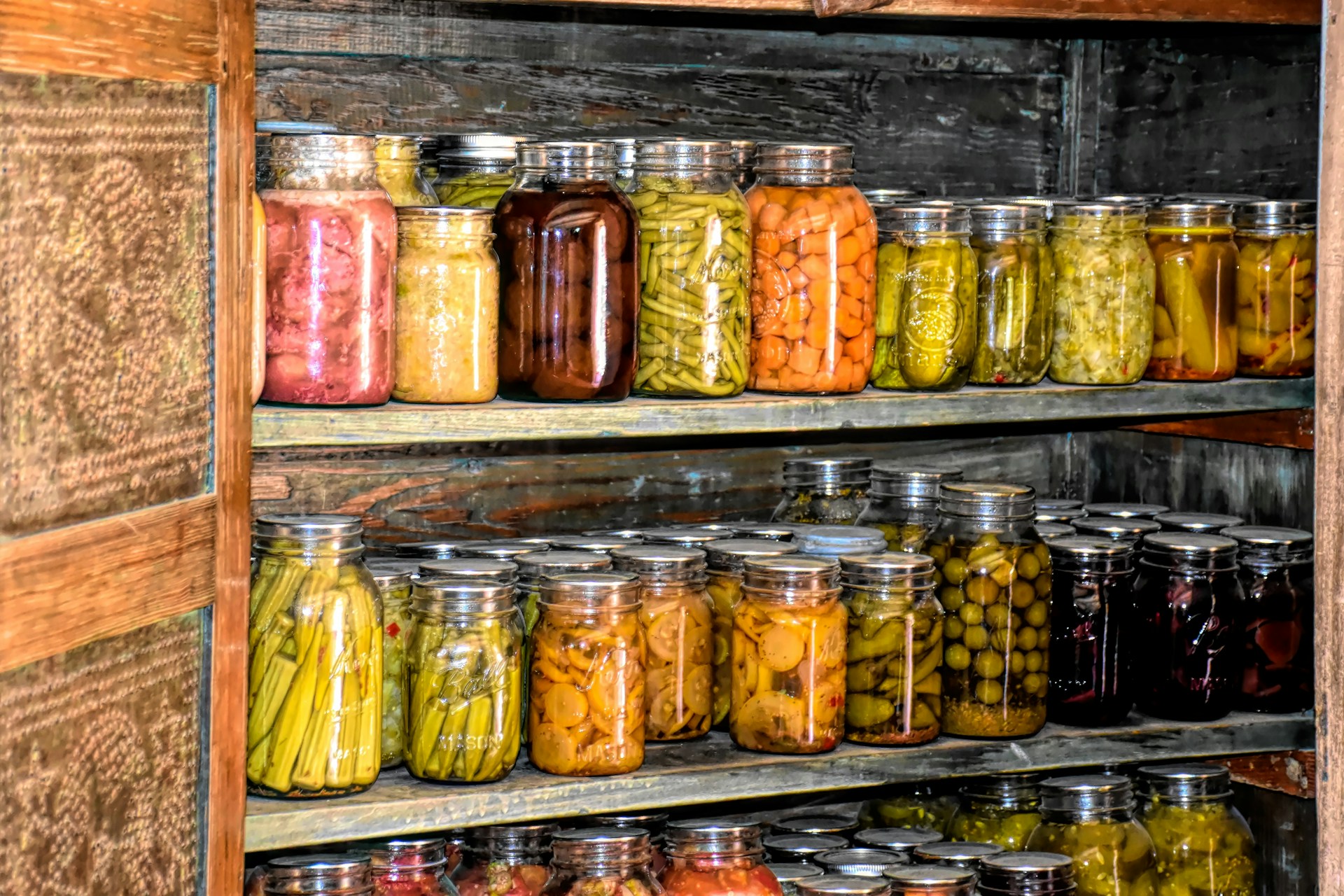Preparedness
Elderly Oakland Homeowner Arrested After Fatal Shooting of Robbery Suspect

An elderly homeowner in Oakland, aged 77, was taken into custody under suspicion of murder following the fatal shooting of an alleged robbery suspect earlier this week, as disclosed by KTVU-TV.
Presently, it is uncertain whether the homeowner, whose identity has not been disclosed by KTVU, will face formal charges, and whether the fatal shooting is justified under the grounds of self-defense.
‘If you are in imminent fear of your life or someone else’s life in your home, you have every right to take necessary means for self-defense against the invaders.’
Reportedly, two men and a woman parked a stolen Infiniti Q40 near a property in the vicinity of 98th Avenue and Burr Street in East Oakland around 6 p.m. on Monday.
According to a witness’s statement to the police, the threesome trespassed onto the property, with one man wielding a crowbar. The witness then reported hearing a gunshot, with East Bay Times also reporting an eyewitness account of the group breaking into the man’s house.
Local residents reported hearing multiple gunshots in the area of 98th Avenue and Burr Street to the station.
Upon their arrival, the police found the homeowner holding a stolen Colt Python revolver aimed at the female suspect, as per court documents cited by KTVU. The female suspect informed the cops that her accomplice was shot by the homeowner. Despite the efforts of firefighters and paramedics, the unnamed suspect succumbed to his injuries at the scene.
The third suspect, found at the scene with a replica firearm, was arrested under suspicion of burglary. As of Wednesday morning, Alameda County prosecutors have not yet charged the third suspect, as reported by the Times.
The homeowner is reportedly being held without bail since Wednesday morning, according to the Times. The decision to charge or release the homeowner lies with the Alameda County District Attorney’s Office, which has until Thursday to make a decision.
KTVU legal analyst Michael Cardoza highlighted, “You’re not supposed to chase them. If you chase them and shoot them, for example, in the back, that is unlawful.” He further stated that despite this, the homeowner could still argue self-defense, depending on the facts: “If you are in imminent fear of your life or someone else’s life in your home, you have every right to take necessary means for self-defense against the invaders.”
Watch a local news report about the incident below:
Let us know what you think, please share your thoughts in the comments below.

Preparedness
Discover the Ultimate Survival Food That Lasts a Lifetime

Before the advent of modern MREs, a simple yet effective survival food powered both armies and explorers alike. Known for its longevity and simplicity, this food has been a staple from the tables of kings to the hands of common sailors. If you’re considering essential rations for a survival situation, this should be at the top of your list.
The food in question is hardtack, a basic blend of flour, water, and salt, baked into a dense biscuit. Each piece provides around 250 calories and 54 grams of carbohydrates, and its remarkable shelf life can extend to a century or more.
Hardtack’s history is as rich as its nutritional profile. Ancient Egyptian warriors carried millet flour cakes known as “dhourra” for their long sea voyages. Similarly, Roman soldiers consumed “bucellatum” as a staple ration. By the sixteenth century, British Royal Navy sailors were issued a pound of hardtack daily, accompanied by a gallon of beer.
One of hardtack’s unique properties is that it softens over time due to humidity exposure. This characteristic meant it was often prepared well in advance of consumption. However, when fresh, it lived up to its name—extremely hard and sometimes nearly inedible. Soldiers humorously dubbed it “tooth duller,” “iron cracker,” and “molar breaker.” To make it palatable, they would soak it in available liquids. Sailors used beer, while Civil War soldiers favored coffee for its warm, nutty flavor. Others used milk, soups, and stews.
Despite its toughness, hardtack remains an unparalleled survival food. It offers a straightforward way to sustain oneself for extended periods. In fact, you might encounter hardtack from over 150 years ago in Civil War museums, still intact and technically edible.
Even if you’re not a historical soldier or sailor, hardtack can still be a valuable addition to your survival kit. Its easy storage and high energy content make it ideal for off-the-grid living. It complements stews, soups, and other camp foods perfectly. Additionally, some preppers prefer it over storing flour, which has a shorter shelf life. “Why store flour, which goes bad after just a few months, when you can bake it into hardtack and store it for a lifetime?”
Creating hardtack is straightforward. Mix flour, salt, and a cup of water into a dough. Flatten the dough to a thickness of ¼ to ½-inch and cut it into squares. Poke holes into each square. Bake the biscuits in the oven at 375 degrees for 30 minutes. Once removed, allow them to dry completely.
Hardtack is more than just a relic of the past; it’s a practical solution for modern survival needs. Its simplicity, longevity, and nutritional value make it an indispensable resource for anyone preparing for uncertain times.
Let us know what you think, please share your thoughts in the comments below.
Preparedness
Bug-Out Bag Essentials Every Prepper Needs for Emergencies

When disaster strikes, it’s often unexpected, leaving many unprepared and scrambling for essentials. One crucial aspect of preparedness is having a backup plan for your emergency supplies. Disasters have a knack for obliterating whatever stands in their way, including your meticulously gathered emergency provisions. This situation creates a dual problem: the financial burden of replacing those supplies and the immediate lack of essentials when they are most needed.
Fortunately, there’s a solution that many preppers already have in place, albeit sometimes without fully realizing its potential: the bug-out bag. This humble pack can serve as an invaluable lifeline during a shelter-in-place emergency.
A common strategy among seasoned preppers is to distribute emergency supplies throughout various locations in the home. This tactic ensures that if one area is compromised, supplies in other areas remain accessible. However, if this isn’t feasible, or if you simply haven’t had the time to implement it, a well-stocked bug-out bag kept in an easily accessible spot, like under the stairs or near the main exit, can be a lifesaver. It provides a fallback option when your primary supplies are inaccessible.
“During most major emergency events, there’s a strong chance you’ll be alone the first few days waiting for even the slimmest rescue assistance,” according to insights from disaster survivors. A bug-out bag equipped with 72 hours’ worth of food can bridge the gap until help arrives or until you can secure a more sustainable food source. While a two-week food supply is ideal, as even FEMA suggests, having three days’ worth of provisions can help you endure the immediate aftermath of a disaster.
Water is another critical component. A bug-out bag should include a 72-hour supply of water, which can sustain you until you locate a more substantial source. Moreover, if your bag includes a reliable water filter, you have a tool to stay hydrated for extended periods. With access to a basic water source, even a dirty one, you’re equipped to make it through challenging times.
In less severe situations, like short power outages or boil advisories, having a 72-hour water supply can prevent you from tapping into your long-term reserves prematurely. This foresight can save you from unnecessary stress during minor emergencies.
Power is another area where bug-out bags shine. “Lack of power is common among both” bugging out and bugging in scenarios. Therefore, it’s wise to include power sources such as batteries and solar chargers in your bag. These can keep essential devices like flashlights and chargers operational during the initial days of a disaster. A flashlight is indispensable for preventing injuries in the dark, while a charged device ensures you can maintain communication and access information.
Power outages are almost guaranteed in disasters, whether caused by earthquakes, hurricanes, wildfires, or blizzards. When the electricity fails, it could be down for days, if not longer. This is where the light sources in your bug-out bag become crucial. Having an extra flashlight or two ensures you’re prepared for any eventuality, whether a device fails, runs out of power, or additional help is needed for others.
In conclusion, while we often consider bug-out bags as tools for evacuation, their utility in shelter-in-place scenarios cannot be overstated. They provide a practical and effective backup plan, ensuring that even if your primary supplies are compromised, you have the essentials to weather the storm.
Let us know what you think, please share your thoughts in the comments below.
Preparedness
Maximize Pantry Space by Canning Entire Meals

If you’re already familiar with the basics of canning, you’ve likely ventured into preserving jams, jellies, or perhaps even some fruits and vegetables. But have you considered the potential of canning entire meals? This technique not only maximizes your canner’s utility but also proves to be a tremendous time saver.
Canning complete meals follows a process similar to traditional canning, but with the added benefit of having ready-to-eat meals that can be stored for years. One of the significant advantages is that these meals “last five times longer than frozen foods.”
While canned meals are a fantastic addition to your pantry, it’s advisable not to rely solely on them in emergencies. A well-rounded emergency supply should include a mix of canned, freeze-dried, and dehydrated foods, as these can offer longer shelf lives and potentially better nutrient retention.
For those new to canning, it’s wise to start with simple recipes. Begin with basic, one-to-two-ingredient items to gain experience and learn from any mistakes before moving on to more complex meals, such as those involving meat.
There are two main methods for canning whole meals: using raw ingredients or pre-cooked ingredients.
When canning with raw ingredients, you prepare them as if cooking on a stove or in an oven. Stack them in jars, leaving an inch of headspace for expansion. Fill the jars with the required liquid, such as hot water or broth, and then process them in a pressure canner, which cooks the food.
A few tips can enhance your raw ingredient canning experience. Layer each ingredient separately, such as beef, onions, and carrots in a beef stew. If you choose to add herbs and spices, “make herbs and spices your top layer” to avoid issues like gumming or burning. Be cautious with strong herbs like sage or oregano, as they can become bitter over time. Sometimes, seasoning with just salt is best, allowing you to add spices when you serve the meal.
If your recipe includes potatoes, remember to peel them to avoid having root vegetable skins in your jar.
Alternatively, you can pre-cook your meals before canning. This method is ideal for dishes like chili or spaghetti sauce, which benefit from simmering to blend flavors. Similar to raw canning, leave an inch of headspace, seal the jars, and process them in a pressure canner.
Ensure there are no air bubbles in the jar by using a wooden or plastic tool to gently stir the food around the jar’s circumference.
Not all foods are suitable for canning, so be mindful of what you choose to preserve. Carefully selecting ingredients will help ensure your meals last for years.
Embark on the journey of canning your own meals, and experience the convenience and satisfaction it brings. Let us know how your canning adventures unfold!
Let us know what you think, please share your thoughts in the comments below.
-

 Tactical1 year ago
Tactical1 year ago70-Year-Old Fends Off Intruder with Lead-Powered Message
-

 Tactical1 year ago
Tactical1 year agoVape Shop Employee Confronts Armed Crooks, Sends Them Running
-

 Preparedness10 months ago
Preparedness10 months agoEx-Ballerina’s Guilty Verdict Sends Tremors Through Gun-Owner Community
-

 Preparedness8 months ago
Preparedness8 months agoGood Samaritan Saves Trooper in Harrowing Interstate Confrontation
-

 Tactical1 year ago
Tactical1 year agoMidnight SUV Theft Interrupted by Armed Homeowner’s Retaliation
-

 Survival Stories2 years ago
Survival Stories2 years agoEmily’s 30-Day Experience of Being Stranded on a Desert Island
-

 Preparedness9 months ago
Preparedness9 months agoArizona Engineer’s Headless Body Found in Desert: Friend Charged
-

 Preparedness8 months ago
Preparedness8 months agoBoy Saves Dad from Bear Attack with One Perfect Shot
Scotty
June 24, 2024 at 11:45 am
When a law says you can’t defend yourself, your family or your property, the law is wrong!
Ty
June 24, 2024 at 12:54 pm
This home owner should not be arrested.this is a out rage.
Timothy
June 24, 2024 at 1:03 pm
home owners should also be aware of where they live. Do NOT live where your peers are socialist wackos & morons. They hate freedom loving, sane people.
Paul49
June 24, 2024 at 1:43 pm
The police are no longer effective in protecting the citizens. Time to have to handle crime ourlselves
Herb
June 24, 2024 at 2:46 pm
Theft is murder on the installment plan. Everytime someone works to purechase an item that is stolen the thief has stolen the time that the person worked to buy it. Murder in small or large doses.
Deadly force should be allowed in the protection of person and property.
ken jelinek
June 24, 2024 at 4:56 pm
holding a crow bar is considered a dangerous weapon and burglary tool , tell me if confronted bya manwith a crow bark your not in fear for your life .
Joe
June 27, 2024 at 12:59 pm
He has a right to defend himself. This is what this country needs to stand up to people that breaks into their homes.